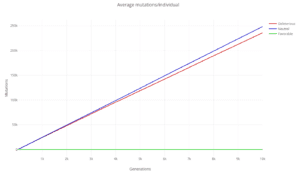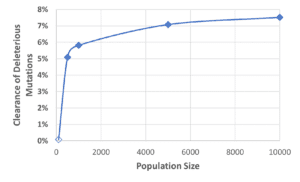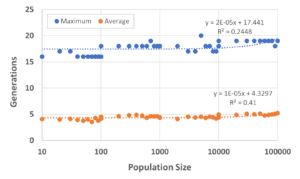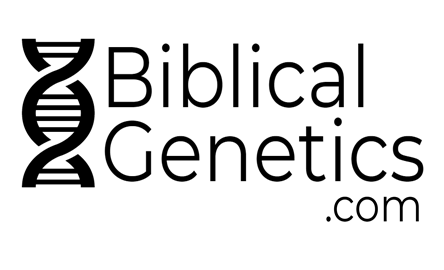Dr Rob explains an issue in the creation vs. evolution debate: how fast mutations accumulate. The rate we can measure in families (the ‘genealogical’ rate) is much faster than the rate at which it is claimed mutations accumulate in the population (the ‘phylogenetic’ rate). There are good reasons why the genealogical rate is closer to the real value we should use to date Adam and Eve, including the fact that most mutations are selectively neutral and, therefore, accumulate at the rate at which the occur. Yes, natural selection can remove some mutations. Thus, the long-term mutation rate is a little slower than the genealogical mutation rate, but the difference is a few percent, not two orders of magnitude. There are several charts shown in this presentation that are part of an ongoing project that Dr Rob is working on. When the paper is published, a link will be added here.
In the meantime, here are the charts:

Figure 1: Using Mendel’s Accountant, the accumulation of neutral (blue), deleterious (red), and beneficial (green) alleles can be tracked over time. These are the results from a model population of 500 individuals with a neutral mutation frequency of 0.5 over 10,000 generations.

Figure 2: Using Mendel’s Accountant and summarizing over many runs, we can see that the separation between the blue and red lines in Figure 1 is negligible (less than 8% in populations of 10,000 individuals). The size of the population does not appreciably affect the mutation accumulation rate.

Figure 3: Using my own population modeling software, I was able to estimate the average lifespan of any new, neutral mutation. I ran each population size model 1,000 times and took an average (orange dots). Since most new alleles are lost to genetic drift very quickly, the size of the population is almost irrelevant. In the video, I say “4” generations, but I said that before I had finished all the models runs. I think “5” is a better estimate. It takes, on average, 5 generations for any new mutation to be lost (btw, this also applies to beneficial mutations, as Sanford has shown in his work with Mendel).
Further reading: Carter, R., A successful decade for Mendel’s Accountant, Journal of Creation 33(2):51–56, 2019.
Podcast: Play in new window | Download

In the evolutionary scenario, itochondrial Eve is said to be the ancestor of anatomically modern humans. If we throw Neanderthals and Denisovans into this genetic mix, where does that leave us.